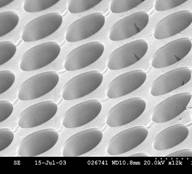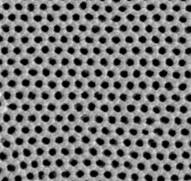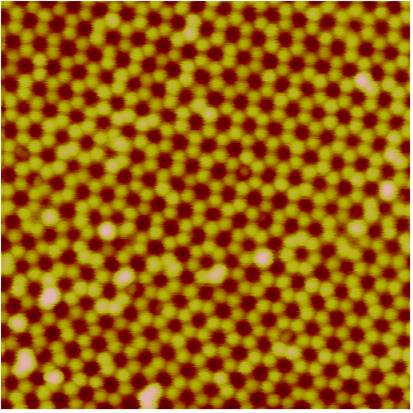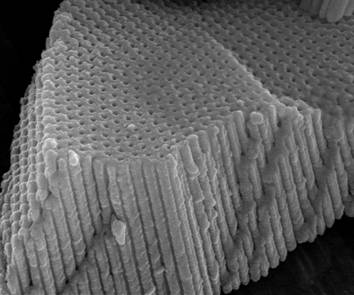|
Nanoscale Templates and Pattern Formation
To assist in the synthesis and development of a wide range of nanoscale materials we have developed templates in which these materials can be grown or assembled. The first and most widely used templates are anodized aluminum oxide (AAO) membranes which can be used to fabricate wires ranging in size from 20-200nm. These templates can be filled from the bottom up (electrochemically) or radially from the sides-inwards (sol-gel). The resulting wires can be metals, semiconductors or hybrids of either. Indeed, even layers of molecules can even be incorporated into these wires during growth. In collaboration with colleagues at University College Cork, we also have access to microporous silica membranes with pores sizes down to 1-10nm. Pores in these latter materials cannot be filled by simple electrochemical or sol-gel methods. Instead, it is necessary to resort to supercritical fluids, which have near zero viscosity and can deliver materials even into nm sized pores. In addition we are also interested in the formation of novel polymer templates where the depth and geometry can be tuned to a range of different applications (see Nanoscale Photonics).
| Porous AAO template formed by anodic oxidation of Al metal foil. The pore size shown is approx. 100nm. The pores are arranged in a hexagonal pattern and can be filled electrochemically or using a sol-gel process. |

|
 |
Ordered array of cylindrical pores in polystyrene produced by condensation and self-assembly of water droplets on the surface of the polymer solution. The ordering, geometry and size of these pores can be controlled. |
This is an AFM image of a 35nm ordered pore array by 1X1um.
|
 |

|
This is a SEM image of a cross section view of a 65nm template |
Back to top
|




